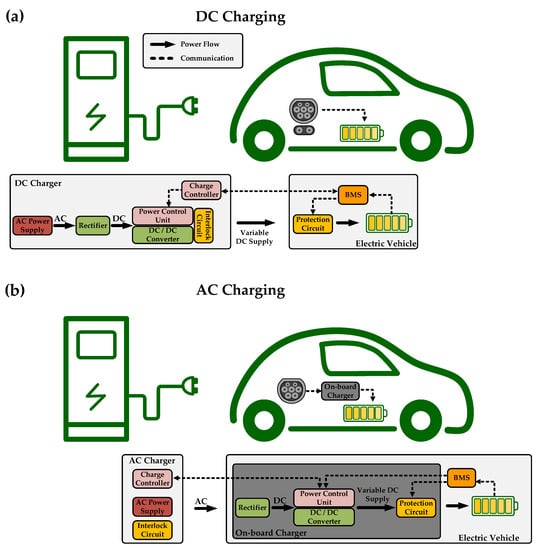Understanding the Importance of Safety Standards in Electric Vehicles
The growing concern for safety in electric vehicles has led to a surge in demand for standardized safety protocols to protect drivers, passengers, and pedestrians. As the electric vehicle market continues to expand, safety standards play a crucial role in shaping the industry’s growth and adoption. The integration of electric motor safety standards is particularly vital, as it directly impacts the overall safety and performance of electric vehicles.
Electric vehicle manufacturers are now prioritizing safety features and certifications to meet the evolving needs of consumers and regulatory bodies. The development of safety standards for electric vehicles is a complex process, involving collaboration between industry organizations, regulatory bodies, and manufacturers. These standards address various aspects of electric vehicle safety, including battery safety, electrical safety, and crashworthiness.
The importance of safety standards in electric vehicles cannot be overstated. A study by the National Highway Traffic Safety Administration (NHTSA) found that electric vehicles with advanced safety features, such as automatic emergency braking and lane departure warning, have a lower incidence of accidents and injuries. Moreover, safety standards can impact the adoption and growth of the electric vehicle market, as consumers are increasingly seeking safe and reliable transportation options.
As the electric vehicle industry continues to evolve, it is essential to stay informed about the latest trends and developments in safety standards. By understanding the importance of safety standards in electric vehicles, consumers can make informed purchasing decisions and manufacturers can prioritize safety features and certifications. The integration of electric motor safety standards is critical to ensuring the overall safety and performance of electric vehicles, and its impact on the industry’s growth and adoption cannot be ignored.
How to Identify Safe Electric Vehicles: A Guide to Certification and Compliance
Identifying safe electric vehicles can be a daunting task for consumers, especially with the numerous options available in the market. However, understanding the certification and compliance process can help consumers make informed purchasing decisions. Regulatory bodies, such as the National Highway Traffic Safety Administration (NHTSA) and the European New Car Assessment Programme (Euro NCAP), play a crucial role in ensuring that electric vehicles meet safety standards.
Industry organizations, such as the Society of Automotive Engineers (SAE) and the International Electrotechnical Commission (IEC), also contribute to the development of safety standards for electric vehicles. These organizations provide guidelines and certifications for electric vehicle manufacturers to follow, ensuring that their products meet the required safety standards.
Consumers can identify safe electric vehicles by looking for certifications such as the SAE J2954 standard, which evaluates the safety of electric vehicle charging systems. Additionally, consumers can check for compliance with industry standards, such as the IEC 62196 standard, which specifies the safety requirements for electric vehicle charging systems.
When purchasing an electric vehicle, consumers should also look for safety features such as automatic emergency braking, lane departure warning, and blind spot detection. These features can significantly reduce the risk of accidents and injuries. Furthermore, consumers should check the vehicle’s safety ratings, such as the 5-star safety rating from the NHTSA or the 5-star Euro NCAP rating.
By understanding the certification and compliance process, consumers can make informed purchasing decisions and ensure that their electric vehicle meets the required safety standards. The electric vehicle industry is constantly evolving, and staying informed about the latest trends and developments in safety standards is crucial for consumers and manufacturers alike.
The Evolution of Electric Motor Safety Standards: A Look at Current Trends
The electric motor safety standards have undergone significant changes in recent years, driven by advances in technology and the growing demand for electric vehicles. The Society of Automotive Engineers (SAE) and the International Electrotechnical Commission (IEC) have played a crucial role in developing and promoting electric motor safety standards. These standards have evolved to address emerging trends and technologies, such as advanced materials and thermal management systems.
One of the key trends in electric motor safety standards is the increasing focus on thermal management. Electric motors generate heat during operation, which can affect their performance and lifespan. To address this issue, manufacturers are developing advanced thermal management systems that can efficiently dissipate heat and maintain optimal motor performance. These systems include advanced materials, such as high-temperature superconductors, and innovative cooling technologies, such as liquid cooling systems.
Another trend in electric motor safety standards is the growing importance of electromagnetic compatibility (EMC). Electric motors can generate electromagnetic interference (EMI) that can affect the performance of other electrical systems in the vehicle. To address this issue, manufacturers are developing electric motors with built-in EMC shielding and filtering systems. These systems can reduce EMI and ensure reliable operation of the vehicle’s electrical systems.
The IEC has recently published a new standard, IEC 62893, which provides guidelines for the design and testing of electric motors for electric vehicles. This standard addresses key safety issues, such as thermal management, EMC, and electrical safety. The standard also provides guidelines for the testing and validation of electric motors, which can help manufacturers ensure that their products meet the required safety standards.
The evolution of electric motor safety standards is expected to continue, driven by advances in technology and the growing demand for electric vehicles. As the industry continues to evolve, it is essential to stay informed about the latest trends and developments in electric motor safety standards. By understanding these trends, manufacturers and consumers can ensure that electric vehicles meet the required safety standards and provide a safe and reliable driving experience.
Real-World Examples: Safe Electric Vehicles Leading the Way
The electric vehicle market is rapidly evolving, with many manufacturers prioritizing safety in their designs. Two notable examples of safe electric vehicles are the Tesla Model 3 and the Chevrolet Bolt. Both vehicles have received top safety ratings from regulatory bodies and have been recognized for their advanced safety features.
The Tesla Model 3, for instance, has received a 5-star safety rating from the National Highway Traffic Safety Administration (NHTSA) and has been named a Top Safety Pick+ by the Insurance Institute for Highway Safety (IIHS). The vehicle features a range of advanced safety features, including automatic emergency braking, lane departure warning, and blind spot detection. Additionally, the Model 3 has a robust battery management system that helps to prevent battery fires and electrical shock.
The Chevrolet Bolt, on the other hand, has also received a 5-star safety rating from the NHTSA and has been named a Top Safety Pick by the IIHS. The vehicle features a range of advanced safety features, including forward collision alert, lane departure warning, and rear cross traffic alert. The Bolt also has a comprehensive battery management system that helps to prevent battery fires and electrical shock.
Both the Tesla Model 3 and the Chevrolet Bolt have demonstrated a commitment to
Real-World Examples: Safe Electric Vehicles Leading the Way
The electric vehicle market is rapidly evolving, with many manufacturers prioritizing safety in their designs. Two notable examples of safe electric vehicles are the Tesla Model 3 and the Chevrolet Bolt. Both vehicles have received top safety ratings from regulatory bodies and have been recognized for their advanced safety features.
The Tesla Model 3, for instance, has received a 5-star safety rating from the National Highway Traffic Safety Administration (NHTSA) and has been named a Top Safety Pick+ by the Insurance Institute for Highway Safety (IIHS). The vehicle features a range of advanced safety features, including automatic emergency braking, lane departure warning, and blind spot detection. Additionally, the Model 3 has a robust battery management system that helps to prevent battery fires and electrical shock.
The Chevrolet Bolt, on the other hand, has also received a 5-star safety rating from the NHTSA and has been named a Top Safety Pick by the IIHS. The vehicle features a range of advanced safety features, including forward collision alert, lane departure warning, and rear cross traffic alert. The Bolt also has a comprehensive battery management system that helps to prevent battery fires and electrical shock.
Both the Tesla Model 3 and the Chevrolet Bolt have demonstrated a commitment to
Real-World Examples: Safe Electric Vehicles Leading the Way
The electric vehicle market is rapidly evolving, with many manufacturers prioritizing safety in their designs. Two notable examples of safe electric vehicles are the Tesla Model 3 and the Chevrolet Bolt. Both vehicles have received top safety ratings from regulatory bodies and have been recognized for their advanced safety features.
The Tesla Model 3, for instance, has received a 5-star safety rating from the National Highway Traffic Safety Administration (NHTSA) and has been named a Top Safety Pick+ by the Insurance Institute for Highway Safety (IIHS). The vehicle features a range of advanced safety features, including automatic emergency braking, lane departure warning, and blind spot detection. Additionally, the Model 3 has a robust battery management system that helps to prevent battery fires and electrical shock.
The Chevrolet Bolt, on the other hand, has also received a 5-star safety rating from the NHTSA and has been named a Top Safety Pick by the IIHS. The vehicle features a range of advanced safety features, including forward collision alert, lane departure warning, and rear cross traffic alert. The Bolt also has a comprehensive battery management system that helps to prevent battery fires and electrical shock.
Both the Tesla Model 3 and the Chevrolet Bolt have demonstrated a commitment to
Real-World Examples: Safe Electric Vehicles Leading the Way
The electric vehicle market is rapidly evolving, with many manufacturers prioritizing safety in their designs. Two notable examples of safe electric vehicles are the Tesla Model 3 and the Chevrolet Bolt. Both vehicles have received top safety ratings from regulatory bodies and have been recognized for their advanced safety features.
The Tesla Model 3, for instance, has received a 5-star safety rating from the National Highway Traffic Safety Administration (NHTSA) and has been named a Top Safety Pick+ by the Insurance Institute for Highway Safety (IIHS). The vehicle features a range of advanced safety features, including automatic emergency braking, lane departure warning, and blind spot detection. Additionally, the Model 3 has a robust battery management system that helps to prevent battery fires and electrical shock.
The Chevrolet Bolt, on the other hand, has also received a 5-star safety rating from the NHTSA and has been named a Top Safety Pick by the IIHS. The vehicle features a range of advanced safety features, including forward collision alert, lane departure warning, and rear cross traffic alert. The Bolt also has a comprehensive battery management system that helps to prevent battery fires and electrical shock.
Both the Tesla Model 3 and the Chevrolet Bolt have demonstrated a commitment to
Real-World Examples: Safe Electric Vehicles Leading the Way
The electric vehicle market is rapidly evolving, with many manufacturers prioritizing safety in their designs. Two notable examples of safe electric vehicles are the Tesla Model 3 and the Chevrolet Bolt. Both vehicles have received top safety ratings from regulatory bodies and have been recognized for their advanced safety features.
The Tesla Model 3, for instance, has received a 5-star safety rating from the National Highway Traffic Safety Administration (NHTSA) and has been named a Top Safety Pick+ by the Insurance Institute for Highway Safety (IIHS). The vehicle features a range of advanced safety features, including automatic emergency braking, lane departure warning, and blind spot detection. Additionally, the Model 3 has a robust battery management system that helps to prevent battery fires and electrical shock.
The Chevrolet Bolt, on the other hand, has also received a 5-star safety rating from the NHTSA and has been named a Top Safety Pick by the IIHS. The vehicle features a range of advanced safety features, including forward collision alert, lane departure warning, and rear cross traffic alert. The Bolt also has a comprehensive battery management system that helps to prevent battery fires and electrical shock.
Both the Tesla Model 3 and the Chevrolet Bolt have demonstrated a commitment to





